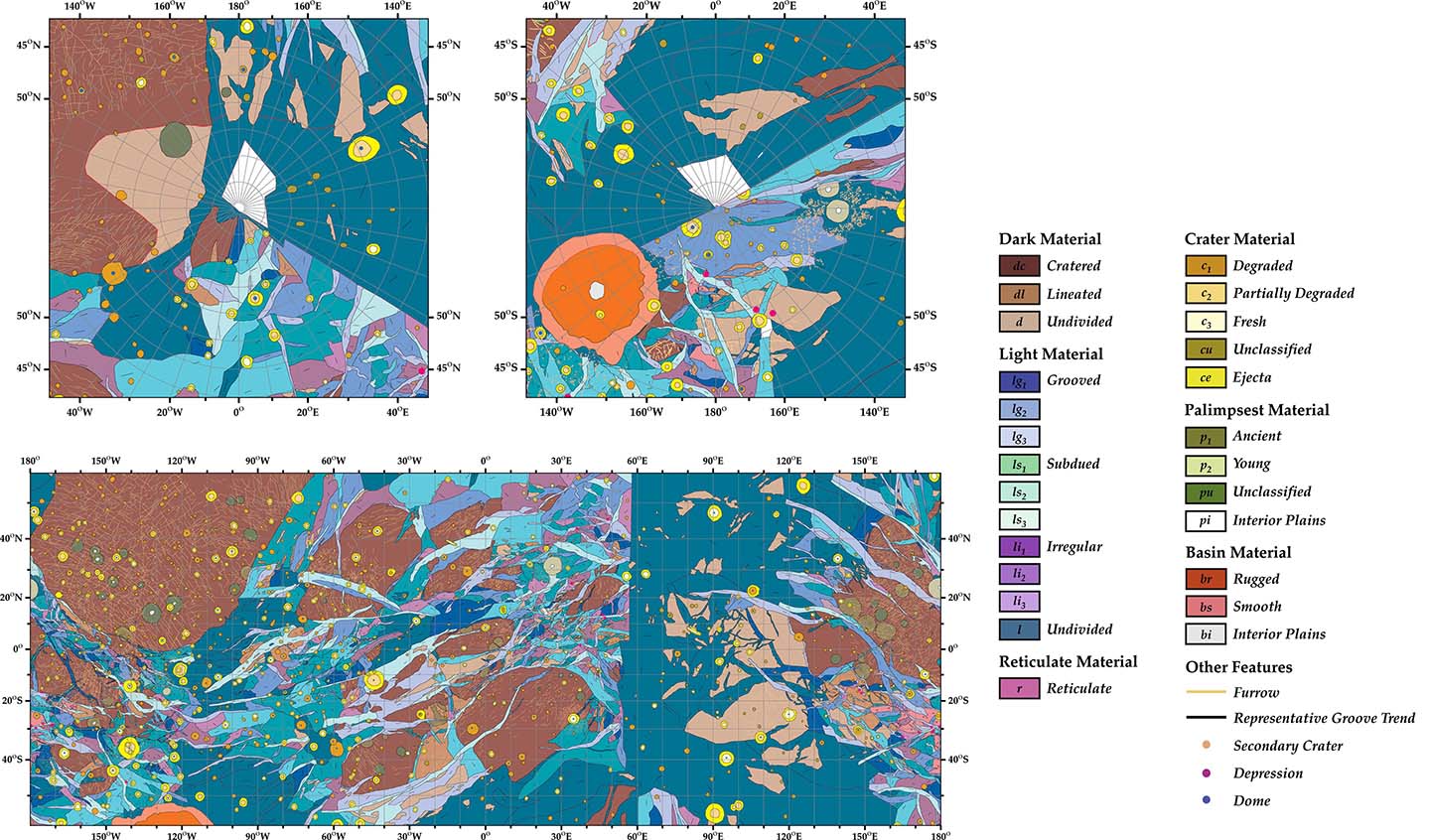Press Release
Scientists Create First Global Geological Map of Solar System’s Largest Moon
Wed, 05/26/2010 - 14:29
Scientists have assembled the first global geological map of Ganymede and, in doing so, have gathered new evidence into the formation of the solar system’s largest moon.
Wes Patterson, a planetary scientist at The Johns Hopkins University Applied Physics Laboratory in Laurel, Md., led a seven-year effort to craft a detailed map of geological features on the icy satellite of Jupiter. Patterson and a half-dozen scientists from several institutions used images from NASA’s historic Voyager and Galileo missions to create the map; it’s only the third of its kind covering a planetary satellite – similar maps exists for Earth’s moon and Jupiter’s moon Callisto – and second of four planned for the large satellites of Jupiter.
“The map really gives us a more complete understanding of the geological processes that have shaped the Ganymede we see today,” says Patterson, whose team presents its work in the June 2010 issue of the journal Icarus.
With a diameter of 5,262 kilometers (3280 miles), Ganymede is larger than both planet Mercury and dwarf planet Pluto. It’s also the only satellite in the solar system known to have its own magnetosphere. The map details geologic features of the moon that formed and evolved over much of our solar system’s history. These features record evidence of the internal evolution of this large icy satellite, of its dynamical interactions with the other Galilean satellites, and of the evolution of the population of small bodies impacting the surface of the satellite.
While scientists have crafted several regional geological maps of Ganymede’s surface using Voyager data, Patterson’s team was the first to combine the low-resolution Voyager photos with high-resolution Galileo images to create a global and consistent view of the moon’s geology.
“By mapping the entirety of Ganymede’s surface, we can more accurately address scientific questions regarding the formation and evolution of this truly unique moon,” Patterson says. “Work done using the map by collaborator Geoff Collins at Wheaton College, for instance, has shown that vast swaths of grooved terrain covering the surface of the satellite formed in a specific sequence. The details of this sequence tell us something about the forces that must have been necessary to form those swaths.”
Patterson says scientists can look at Ganymede’s geological history as a benchmark for comparing and contrasting the characteristics and evolution of other large to mid-sized icy satellites. The map will also, he adds, be a reference for exploration of the Jovian system.
NASA and the European Space Agency are currently developing that next voyage: the Europa Jupiter System Mission would include orbiters of Ganymede as well as the icy satellite Europa.
“A primary goal of the next flagship mission to the Jupiter system will be to characterize, in detail, the geophysical, compositional, geological, and external processes that affect icy satellites,” he says. “This map will be an invaluable tool in determining how best to address those goals for Ganymede.”
The team includes Patterson and Louise Prockter, also from APL; James Head, from Brown University; Geoffrey Collins of Wheaton College; Robert Pappalardo from NASA’s Jet Propulsion Laboratory; Baerbel Lucchitta of the U.S. Geological Survey; and Jonathan Kay of the University of Idaho.
The paper and graphics are posted here.
